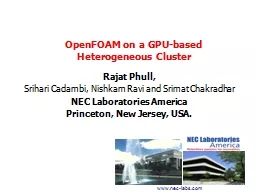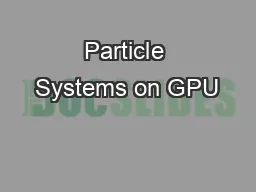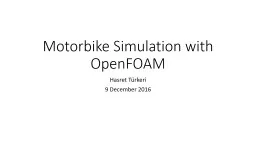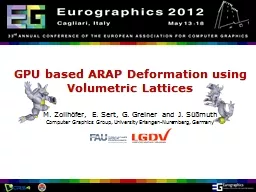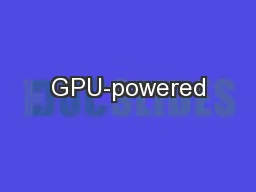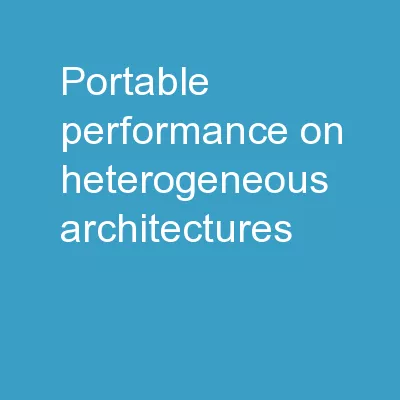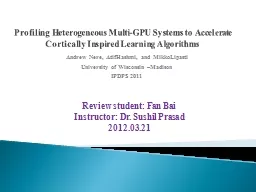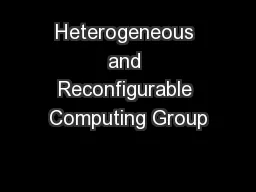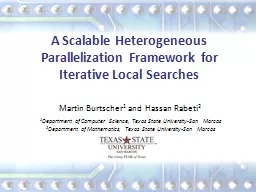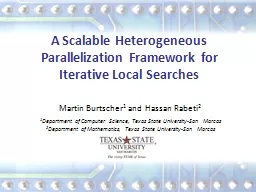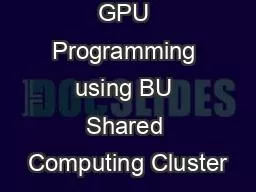PPT-OpenFOAM on a GPU-based Heterogeneous Cluster
Author : tatyana-admore | Published Date : 2016-07-02
Rajat Phull Srihari Cadambi Nishkam Ravi and Srimat Chakradhar NEC Laboratories America Princeton New Jersey USA wwwneclabscom OpenFOAM Overview OpenFOAM stands
Presentation Embed Code
Download Presentation
Download Presentation The PPT/PDF document "OpenFOAM on a GPU-based Heterogeneous Cl..." is the property of its rightful owner. Permission is granted to download and print the materials on this website for personal, non-commercial use only, and to display it on your personal computer provided you do not modify the materials and that you retain all copyright notices contained in the materials. By downloading content from our website, you accept the terms of this agreement.
OpenFOAM on a GPU-based Heterogeneous Cluster: Transcript
Download Rules Of Document
"OpenFOAM on a GPU-based Heterogeneous Cluster"The content belongs to its owner. You may download and print it for personal use, without modification, and keep all copyright notices. By downloading, you agree to these terms.
Related Documents

